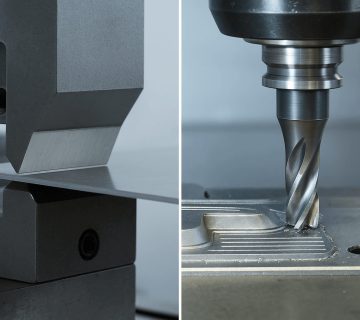Have you ever wondered what makes precision handling in industries like semiconductor manufacturing possible? The answer often lies in carbide tips. These durable and highly precise components are the backbone of pick-up tools, enabling manufacturers to handle delicate tasks like assembling microchips with ease and accuracy. Carbide tips may not be flashy, but their role in ensuring flawless production processes cannot be overstated.
This article explores what carbide tips are, their applications in precision handling, and why they are the ideal choice for pick-up tools. By the end, you’ll understand how these tools contribute to manufacturing excellence and what factors to consider when selecting them.
What Are Carbide Tips?
Carbide tips are small but mighty components crafted from tungsten carbide, a compound known for its incredible hardness and wear resistance. These tips are often mounted on pick-up tools to handle delicate tasks that demand precision and reliability.
Key Properties
- Hardness: Carbide tips are significantly harder than steel, making them ideal for high-wear applications.
- Durability: They can withstand extreme conditions, such as high temperatures and repeated use, without losing their effectiveness.
- Resistance to Corrosion: Carbide tips maintain their integrity even in corrosive environments, ensuring longevity.
Why Carbide?
Compared to other materials, carbide offers a superior combination of strength and precision. This makes it a go-to choice for applications where accuracy is non-negotiable.
Key Applications of Carbide Tips in Precision Handling
Carbide tips are indispensable across various industries, but their role in precision handling stands out the most.
1. Semiconductor Manufacturing
In semiconductor production, carbide tips are integral to die-bonding and pick-and-place processes. These tasks involve handling extremely small and delicate components, such as microchips, where even the slightest error can compromise functionality.
2. Micrometer Precision Work
Carbide tips are also used in industries that require micrometer-level precision, such as aerospace and medical device manufacturing. Their ability to maintain accuracy under challenging conditions makes them invaluable.
3. Durability in Challenging Environments
Whether it’s high heat, pressure, or wear-and-tear, carbide tips excel in demanding environments. This durability ensures consistent performance, even in rigorous applications, reducing downtime and increasing efficiency.
Why Carbide Tips Are Ideal for Pick-Up Tools
Pick-up tools are precision instruments designed to handle delicate and intricate tasks, and carbide tips significantly enhance their performance.
These tips provide superior grip, ensuring that components are securely held without slipping—a critical feature for tasks like die-bonding where precision is vital. Carbide tips can also be customized to meet specific requirements, such as unique shapes or sizes, enabling them to handle a wide variety of tasks effortlessly.
Additionally, their exceptional wear resistance ensures they last much longer than alternatives, reducing the need for frequent replacements and saving both time and costs in manufacturing processes.
Factors to Consider When Choosing Carbide Tips
Selecting the right carbide tip is key to achieving optimal results in precision handling. Here are some important considerations:
1. Size and Shape
The geometry of the carbide tip must match the specific requirements of the task. For example, certain shapes may be better suited for handling microchips, while others might work best for larger components.
2. Material Compatibility
It’s essential to ensure that the carbide tip is compatible with the material it will handle. This prevents damage to the component and ensures efficient operation.
3. Coating Options
Some applications may benefit from additional coatings on carbide tips, such as diamond or titanium coatings, which enhance their durability and performance in specialized tasks.
4. Cost vs. Performance
While carbide tips are an investment, their durability and precision often outweigh their initial cost. Balancing budget constraints with performance needs is crucial when making a selection.
The Role of Carbide Tips in Future Manufacturing
As technology evolves, the need for precision handling continues to grow. Carbide tips are well-positioned to meet these demands, thanks to their unmatched performance and versatility.
1. Advancing Technology
Carbide tips are playing a pivotal role in cutting-edge fields like robotics and nanotechnology. Their ability to deliver precision at microscopic levels makes them ideal for these emerging applications.
2. Emerging Applications
Beyond traditional industries, carbide tips are finding uses in innovative fields, such as AI-driven manufacturing systems, where accuracy and consistency are critical.
3. Sustainability and Efficiency
By reducing waste and enhancing efficiency, carbide tips contribute to more sustainable manufacturing practices. Their durability means fewer replacements and less material consumption, aligning with industry trends toward eco-friendly solutions.
Conclusion
Carbide tips are more than just components; they are enablers of precision and efficiency in modern manufacturing. Their unmatched hardness, durability, and adaptability make them indispensable in industries where accuracy is key.
Whether you’re in semiconductor manufacturing, aerospace, or any field requiring micrometer precision, investing in high-quality carbide tips is a step toward achieving superior results. As manufacturing continues to evolve, carbide tips will remain at the forefront, driving innovation and ensuring the reliability of critical processes.


